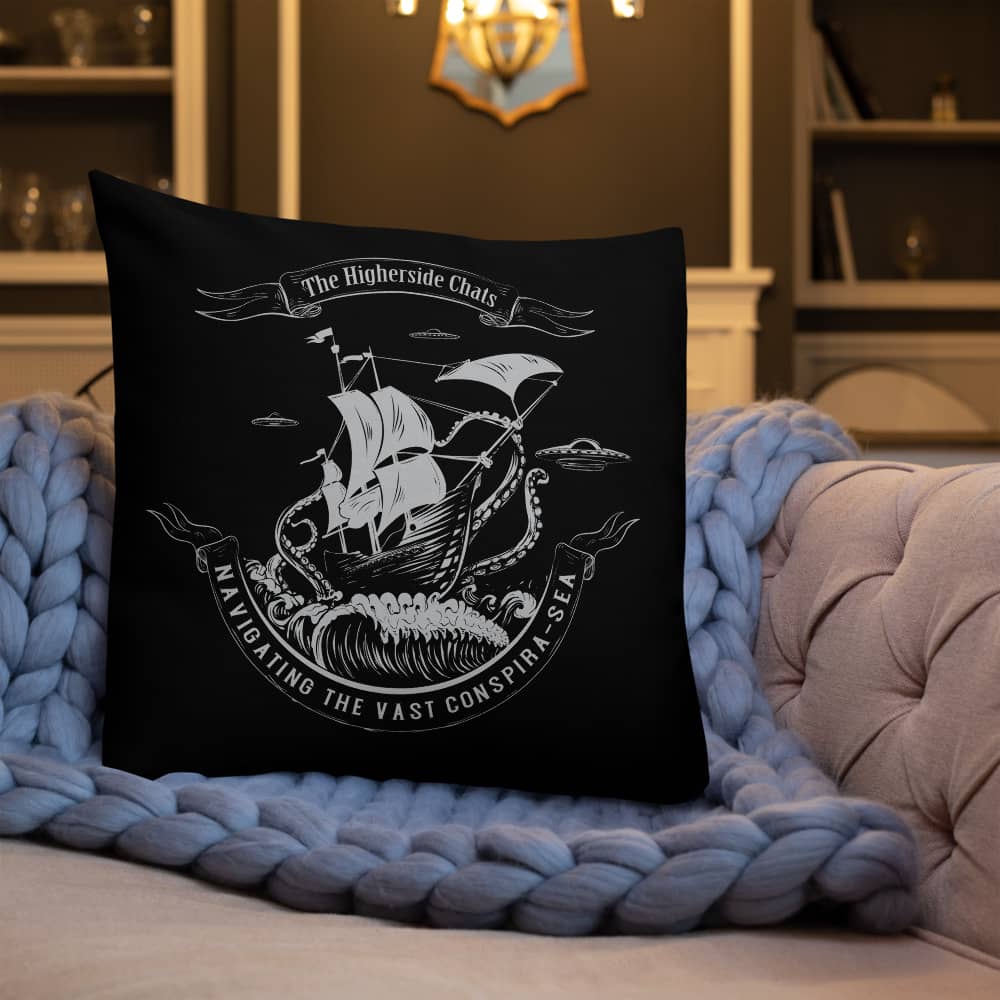With regard to Schauberger, I know that quite a few processes have been claimed to be improved from vortexed water. A decent way of doing this on a budget is to use a PVC or metal pipe with endcaps tapped for a pipe thread with quartz spheres (available on ebay) inside to make a vortex mixing tube. I would not be surprised if growing characteristics were enhanced if using this water and the final product became stronger as a result.
Similar to this, but quartz would be better than glass:
http://blissfuloms.com/wp/?page_id=1391
With regard to utensils I would have my doubts, the impression I get of the final product is that it wouldn't have the necessary rigidity for this application. Perhaps with another process on the back end this would be achievable. One thing that came to mind is the treatment developed to create "superwood".
https://www.fastcompany.com/90160100/a-new-material-called-superwood-is-just-as-strong-as-steel
shamangineer wrote: With regard to Schauberger, I know that quite a few processes have been claimed to be improved from vortexed water. A decent way of doing this on a budget is to use a PVC or metal pipe with endcaps tapped for a pipe thread with quartz spheres (available on ebay) inside to make a vortex mixing tube. I would not be surprised if growing characteristics were enhanced if using this water and the final product became stronger as a result.
Similar to this, but quartz would be better than glass:
http://blissfuloms.com/wp/?page_id=1391With regard to utensils I would have my doubts, the impression I get of the final product is that it wouldn't have the necessary rigidity for this application. Perhaps with another process on the back end this would be achievable. One thing that came to mind is the treatment developed to create "superwood".
https://www.fastcompany.com/90160100/a-new-material-called-superwood-is-just-as-strong-as-steel
Yeah, those PVC pipes filled with marbles seem to be the most common, and low-entry point, compared to the more expensive contraptions, like spiral pipes or the Realice type devices.
Met a guy at my former school yesterday who's building a hydroponic system for his undergrad research, and we briefly talked about water, and come to think of it, this PVC design might be very well-suited for experiments.
Another one of my curious interests is the "Steiner fountain" Flow-form fountains I often see in biodynamic farms:
The superwood process is fascinating. I remember when it was published. Looking at it again, couple similarities with mycelium processing: Baking it at high temperature (same technique used to stop the mycelium from growing).
As always, thank you for the links, need to let the ideas emerge in my head :rolleyes::D
PS: There is a creek I frequently stop-by on my way to work, and it's always mesmerizing to see the water flowing. Though the creek looks rather abandonned and in poor condition (something which the egg-shape device may help with). I'm getting a little ahead of myself here
enjoypolo wrote:
The superwood process is fascinating. I remember when it was published. Looking at it again, couple similarities with mycelium processing: Baking it at high temperature (same technique used to stop the mycelium from growing).
As always, thank you for the links, need to let the ideas emerge in my head :rolleyes::D
It seems to be more like a heated compression.
Since we're talking bio-materials: Another incredible biom* discovery is GMO'd spider silk, which I believe was even cited by Emery Smith as one of those "hidden" technologies developed in Sandia Labs. Bullet-proof material.
EDT: This is the link Emery retweeted back in July 2018, which synchronistically appeared after he disclosed on Cosmic, how they (MIC) have "smart" jump-suits that can detect/heal wounds; give nutrients to the body (so no need to rehydrate/eat constantly); as well as being bullet-proof.
Although this one doesn't explicitly mention spider silk.
It seems to me, that the commonality between all these strong materials, from mycelium, to conchas to Water, is how "decentralized" and "fractal" their structures are. Meaning tiny, but densely packed can dissipate stress, and also be flexible.
Here is a link to yesterday's webinar titled
Nature’s Unifying Patterns by the Biomimicry Institute
https://vimeo.com/320850932
By the way, this may sound a bit foolish, but I purchased a couple years ago some beetle wings from Ebay, thinking that perhaps I could test Grebennikov's experiments at home (I know...:rolleyes:)
Unfortunately, I never really got to it, even though their iridescent emerald-green wings are wonderful to look at, but I'm not quite sure what to do with them anymore.
The only intereting anecdote is placing them in the centre of singing bowl, and they start to dance. But that's just the vibrations from the bowl.
If anyone has any suggestions about what to do, I'd be grateful (I'd hate to just toss them in the garbage). Thank you:)
Or if you're in the area (in BC), I can give them away as well.
You can use them for making handcrafted jewelry, perhaps?
enjoypolo wrote: By the way, this may sound a bit foolish, but I purchased a couple years ago some beetle wings from Ebay, thinking that perhaps I could test Grebennikov's experiments at home (I know...:rolleyes:)
Unfortunately, I never really got to it, even though their iridescent emerald-green wings are wonderful to look at, but I'm not quite sure what to do with them anymore.
The only intereting anecdote is placing them in the centre of singing bowl, and they start to dance. But that's just the vibrations from the bowl.If anyone has any suggestions about what to do, I'd be grateful (I'd hate to just toss them in the garbage). Thank you:)
Or if you're in the area (in BC), I can give them away as well.
You can use them for making handcrafted jewelry, perhaps?
From what I have been able to find in the science most insects ride on vortices that they induce in the air, but I am not convinced that this would entrain enough ether or that it would be oriented correctly to induce lift on an etheric level, just a form of aerodynamics. Basically what Grebennikov conteded was that some insects, and specifically one endangered beetle he had found used another form of flight which used etheric flows to induce levitation. I have attached a picture where someone who claimed to have found the correct beetle had used an electron microscope to show the structure which was repeated in an array on the underside of the beetle wing which looked like a cone (phi-angle?) which was embedded in the surface and had an orifice in the surface at it's peak. From the scale it looks like ~2.5 microns for the orifice diameter and perhaps 7-10 microns for the depth of the cone in the arrayed structure if it were a phi-angle cone. Anonymous information is worth what you pay for it so grain of salt and all that, but perhaps it will yield some clues.
The following conveyed is on the level of rumor:
One thing I have heard is that the craft he made, a kind of etheric scooter, used a step-up circuit to create 16 KV of electrostatic voltage on a plate (using a 9V battery) behind the beetle wings which were on a fan-structure to control lift in each quadrant of the vehicle embedded in his art-case.
From other research the threshold of electrogravitic action is approximately 30 KV, but what if the thrust were augmented with focusing structures to cause a greater localized reaction in the medium of the ether? Just a thought. One thing to keep in mind if one would endeavour to re-create Grebbenikov's etheric scooter is that he claimed it had negative health effects with prolonged use. I would speculate that this is due to unshielded etheric flows of high intensity degrading cellular and metabolic cohesion due to a differential temporal distribution. I have thought that perhaps a similar temporal effect was at work, although at a much higher intensity, in the Nazi bell experiments.
Wow, thank you for the details Shamangineer.
The technicalities are way over my head, and most likely not worth the risks. 😀
Fascinating stuff nonetheless. Grebennikov is so underrated..
I've been letting that info you mentioned last night cogitate in my head.
High-voltage: isn't that how lifters are able to counter-gravity (T-Townsend Brown)?
It also reminds me Dr Pollack's research on electrostatic forces that may in fact account for how birds are able to stay in the air (Puts the whole notion of "gliding" on its head, really, as well as spiders able to fly).
The enigma of the small cones remains though, and we know form affects function including pyramid structures (which is a sharp-angle cone, right?).
If I remember correctly, Grebennikov mentioned how flower shapes, or even egg cartons affect the flow of the field, which insects, like bees pick-up on their radar.
Although I'm probably mis-paraphrasing his views.
The Phi-ratio is another giant, fascinating rabbit hole. But it begs the question, if it works on micro-scale, shouldn't we be able to replicate it at a larger scale?
I appreciate your input on this Shamangineer.
I can't wait to try the Flying Kayak from Howl's Moving Castle someday:rolleyes:

PS: A lot of these Ghibli movies have incredible flying crafts that either biomimic, or look straight out of Delschau's books! Interesting..!
https://www.youtube.com/watch?v=QTL8z5pbmHU
This is a cool show by RT about a creative bunch living in cool dwellings.
EDIT: Wow, they have a pretty cool website, and an app with the designs.
https://www.youtube.com/watch?v=XNjUFaqRmjM
The Plant in Chicago doing the Lord's work.:rolleyes:
Other inspirations recently discovered I'm planning on trying soon (Spring's coming!):
Kratky method: A hydroponics, but without any power (pump) needed.
https://www.youtube.com/watch?v=oDYeffYcVkY
micro-fragmentation for coral reef restoration:
https://www.youtube.com/watch?v=e7n19msJhmQ
shamangineer wrote: micro-fragmentation for coral reef restoration:
https://www.youtube.com/watch?v=e7n19msJhmQ
That coral restoration video was absolutely beautiful. Another great example of life co-operating, not competing. The problems we have with the great barrier reef at the moment is that it is being taken over with crown of thorns corals which are extremely aggressive and throny as the name suggests. Current 'best practice' in dealing with them is to go and individually inject each one with poison. There was a few million dollar chucked at the problem, and inevitably, the local politicians just pocketed the money.
And in regards to the eco architecture, you might enjoy the film of michael reynolds, also known as the garbage warrior. Who designed the house that is in the still of the film clip.
https://www.youtube.com/watch?v=_3orTPHV9DI
Absolutely love these vids about coral restoration, and Earthships home building!
I just finished watching the documentary Garbage Warrior, and it got me so enthralled about it all, that I decided to purchase their App featuring a bunch of designs for various purposes, as well as their blueprints and so much more.
What’s even better, is how much room there is for progress, by combining knowledges from the Blue Economy initiatives, to stuff like aired-concrete/hempcretr, as well as Schauberger’s Water insights.
The latter in particular I think would be useful for Health & Sanitation, since the centripetal forces greatly annhilate bacteria/viruses (for human waste management), as well as lead to healthier plant growth; and positive effects on the skin to name a few. It goes without saying, vortexing for grey water filtration is also well-suited & demonstrated.
The Stuttgart experiment findings are always in the back of my head, where the Kudu horn pipe designs suck in water, thereby could potentially get rid of pumps altogether (or at least reduce the energy load).
Another great treasure trove is the Ohmasa Gas, discovered by Omasa, a Japanese engineer who found out a way via water cavitation thru electrolysis, creating “nano-bubbles” that separate not only hydrogen & oxygen, but an altogether separate gas (HHO?) that can burn thru tungsten like hot knife in butter. It can even be used to run a car outfitted with a propane-engine. I’m at work now, but i’ll post some videos later.
Another incredible invention is the ability to suck out, and collect dew from the environment (especially nearby plants and trees where humidity is higher).
I’m gonna research more on each of these modalities, and hopefully, one day be able to apply some of them in concrete fashion. The only thing I can’t foresee water being used in, is shelter. But then again, with fourth phase crystal-like water, maybe we can build “water-walls” one day. Who know!
The last THC episode with Peter Allen and his work at Mastodon Farms, was not only epic but sort of merged with a lot of what's been shared on the forum. I appreciate a lot for what Greg has put in this interview: notably the case for more self-reliance and more System's thinking approach with the ecology; or the part with Rudolf Steiner and being more well-versed in identifying landscapes.
I would certainly hope the show addresses Plants, and Food(s) as well as the stuff discussed, here and elsewhere on the forum.
I discovered this free periodical titled Zygote Quarterly, dedicated to publishing Nature inspired designs as well as sciences that are biomimic. The first article in the latest issue named You crack me Up! by Tom Keage (p10-11), is featuring a structural investigation of the abalone and conch's nacre shells, including what makes them so strong, and not prone to crack.
Some aspect, like the sandwiched layering of elements aspect in particular is that there seems to tiny, thin sheaths, nanometers in size, that stabilize the cells around, making it resilient.
Highly interesting read if you enjoy this sort of stuff.
By the way, I've always had a weird interest of mine, which are toilets, and I've been thinking the seashell spiral shape may make for a nice urinal. :eek::D right up my alley:rolleyes:o_O
But jokes aside, I would love an episode with Gunter Pauli, to talk about the ways in which are described in his books and videos online.
EDIT 2: ShamanG, I stumbled upon one of your links regarding the use of charcoal and paramagnetism. Incredible knowledge. As a stoner, I recently started collecting and mixing my joint butts from the ash-tray to mix into my mini-compost. Since it's all 100% hemp-made (even the paper/butts), I don't see the inconvenient (though I could be wrong).
https://www.youtube.com/watch?v=gA-3nV8RYHU
Some other links:
https://www.youtube.com/watch?v=k1y8X4XoP4c
https://www.youtube.com/watch?v=DxZJbYVC9F0
(forward to 56mins for Water harvesting part)
After yesterday's episode on agriculture and farming, it got me thinking back to Blue Economy. Particularly, methods of farming that harvest water from the oceans and the atmosphere. So I will be sharing a couple links relating to this. The video above shows Gunter Pauli talking about a farm in Australia that uses water condensate system that gets cold water from the ocean (below 10meters) being circulated in pipes through the Aussie desert crop field which then goes back to the ocean.
The holy grail is that the temperature difference between when the deep-sea water goes thru the surface creates condensation that waters plants. (Or alternatively, water can be stored in a tank, and then used to water the crops). Pauli goes on to say how this circular system creates a pump that never needs external power because the feedback is constant.
This is so cool, and it smacked me in the face because of it's so "obvious" and "of course you can do that!". Anyone's who had a cold beverage in a hot summer weather knows what condensation on the cup looks like.
Not to mention the growth of greens will release humidity and create a micro-climate with more rainfall. Turning deserts into an oasis.
Kudos to Charlie Paton who writes about his company experiences, Seawater Greenhouse here, and here. They are working on projects in Australia, Somalia, Middle East, and other hot, dry regions.
Links: https://blogs.ei.columbia.edu/2011/02/18/seawater-greenhouses-produce-tomatoes-in-the-desert/

https://www.abc.net.au/news/rural/2018-05-15/technology-irrigating-crops-with-condensation-sytem/9760120
In the book about Viktor Schauberger by Callum Coats, I remember this one diagram showing a similar setup using temperature gradiant (delta T) between warmer surface water and deeper cool water, to power an over-unity turbine generating electricity. It seems like combining the turbine with the condensation mechanism could literally create an off-grid self-sustaining farm at large scales, next to the ocean.
2) This one, from the biomimicry website AskNature, is a proof-of-concept that harvests dew water from nearby vegetation.
Called the Chaac-ha Water System, it's basically an inside-out umbrella that collects water on a hydrophobic surface, and directs into a tank using nothing but the force of gravity. It's able to collect rainwater, as well as a couple liters of water per night, from the air (dew) alone.
These things blow my mind away. Speaking of hydrophobic surfaces, I've been paying attention when I cook, at certain veggies, like bamboo shoots or onions brown outer layer, how their skin repels water. Bamboo shoots use tiny hairs (like the lotus leaves or mycelium's hyphae) that makes the water trickle down (like a gore-tex rainjacket) and keeps it dry.
Onions outer protective layer seems to use a different mechanism altogether, but still manages to do the same. (I think it also repels UV light)
https://vimeo.com/55742900
Other related links:
Sundrop Farms, Adelaide, Australia
Case 41 - Electricity from Sea Currents
Case 42 - Electricity from the tap
https://www.youtube.com/watch?v=v1-43nP56So
https://www.youtube.com/watch?v=ljLAfU132sw
Edit: The Namib Desert Beetle gets its water from dew of the ocean winds, thanks to its state-of-the-art shell with micro-grooves and bumps. Wow, what an incredible feat. (source: Guardian, 2016)
- 44 Forums
- 3,506 Topics
- 15.8 K Posts
- 7 Online
- 22.4 K Members






